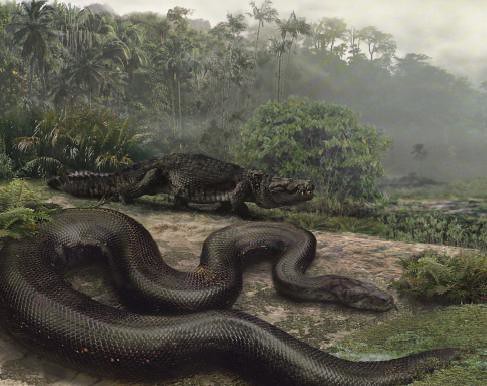The Biggest Snake in The World
The biggest snakes in the world belong to two species: Anaconda and Python Reticulatus.
Anacondas are extremely strong snakes, big enough to swallow even a human body. They can be more than 31 feet long and weigh as much as 540 pounds. They eat large and small mammals, fish and reptiles. They live from 10 to 30 years.
 Their habitats are lakes and rivers of South and Central America. The interesting fact about Anacondas is that they are so to say independent and capable of taking care of themselves as soon as they’re born! Well of course they are, since they are incredibly large from the first day of their lives and don’t need to worry about being eaten.
Their habitats are lakes and rivers of South and Central America. The interesting fact about Anacondas is that they are so to say independent and capable of taking care of themselves as soon as they’re born! Well of course they are, since they are incredibly large from the first day of their lives and don’t need to worry about being eaten.The second snake species considered to be the largest is Python Reticulatis, also called Reticulated Python. The name comes from typical net-like striped skin (Reticulatis in Latin).Their skin is colored in more different colors and that helps them to be undetectable and makes it easier for them to hunt and avoid being captured. They can be more than 30 feet long.
 Comparing to Anaconda, the body of the Reticulated Python is not so heavy like that of an Anaconda. Nevertheless, it is capable of killing an adult man thanks to its strong muscles and contractions they produce. Regardless to that, the Reticulated Pythons are considered to be less dangerous than Anacondas, and there were very few incidents of this kind reported.
Comparing to Anaconda, the body of the Reticulated Python is not so heavy like that of an Anaconda. Nevertheless, it is capable of killing an adult man thanks to its strong muscles and contractions they produce. Regardless to that, the Reticulated Pythons are considered to be less dangerous than Anacondas, and there were very few incidents of this kind reported.What is interesting is that they are great swimmers – they were seen in the open sea, far from land. So be careful when swimming in a sea – you wouldn’t like to meet one of them in person, that’s for sure. Although its body is thinner than Anaconda’s, it doesn’t make it any weaker.







 Posted in:
Posted in: 



